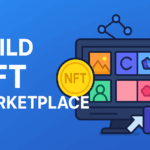In today’s fast-paced and ever-evolving financial landscape, staying ahead of the game is crucial for maximizing profit. One way to do so is by developing a stock trading app. With the rise of technology and the increasing popularity of mobile trading, having a dedicated app for your trading needs can provide numerous benefits. Not only does it allow you to access the stock market anytime, anywhere, but it also offers a range of features that can enhance your trading experience.
From real-time market data and customizable alerts to advanced charting tools and automated trading options, a stock trading app can empower you to make informed decisions and execute trades with speed and precision. The Benefits of Developing a Stock Trading App. In this article, we will delve into the various benefits of developing a stock trading app and how it can help you maximize your profit potential in today’s competitive market. So, buckle up and get ready to take your trading game to the next level!
The benefits of developing a stock trading app
Developing a stock trading app can bring a multitude of benefits to both traders and investors alike. Let’s explore the key advantages that make it a worthwhile investment:
**1. Accessibility and convenience**
A stock trading app provides users with the flexibility to trade on the go. Whether you’re traveling, at work, or simply away from your computer, you can easily access the stock market through your smartphone or tablet. This accessibility ensures that you never miss out on important trading opportunities, allowing you to seize the moment and capitalize on market movements in real-time.
**2. Real-time market data and analysis**
One of the essential features of a stock trading app is the ability to access real-time market data and analysis. This includes live quotes, price charts, news updates, and financial indicators, all of which are crucial for making informed trading decisions. With up-to-date information at your fingertips, you can monitor market trends, track stock performance, and identify potential opportunities or risks, enabling you to execute trades with confidence and precision.
**3. Customizable alerts and notifications**
A stock trading app allows you to set up customizable alerts and notifications based on your specific trading preferences. Whether it’s price alerts, volume alerts, or news alerts, you can tailor these notifications to match your trading strategy and stay informed about important market developments. This feature is particularly useful for active traders who need to closely monitor specific stocks or sectors and react quickly to market changes.
**4. Advanced charting tools**
Charting tools are indispensable for technical analysis, and a stock trading app typically offers a wide range of advanced charting options. From different chart types and timeframes to technical indicators and drawing tools, these features enable traders to analyze price patterns, identify trends, and make more accurate predictions about future price movements. By leveraging these tools, you can gain a competitive edge and enhance your trading strategies.
**5. Automated trading options**
Many stock trading apps also provide automated trading options, such as algorithmic trading or robo-advisory services. These features use predefined rules or algorithms to execute trades automatically based on specified criteria. Automated trading can help eliminate emotions from the trading process and ensure consistent execution of trading strategies. It can also save time and effort, especially for traders who have limited availability or prefer a hands-off approach to trading.
**6. Seamless integration with other financial services**
A well-developed stock trading app can seamlessly integrate with other financial services, such as banking and portfolio management apps. This integration allows users to easily transfer funds, manage their investment portfolios, and track their overall financial performance, all in one place. By consolidating these services, a stock trading app provides a holistic trading experience and simplifies the overall financial management process.
The rise of mobile trading App
The rise of mobile trading has revolutionized the way people participate in the stock market. Mobile trading refers to the ability to trade stocks, bonds, commodities, and other financial instruments using a mobile device, such as a smartphone or tablet. The convenience and accessibility offered by mobile trading have attracted a growing number of retail traders and investors, resulting in a significant shift in the trading landscape.
Gone are the days when traders had to rely on desktop computers or call their brokers to execute trades. With mobile trading, anyone with a smartphone and an internet connection can access the stock market and trade anytime, anywhere. This democratization of trading has opened up new opportunities for individual investors and has leveled the playing field between retail and institutional traders.
Furthermore, mobile trading apps have evolved to provide a seamless user experience, with intuitive interfaces and user-friendly features. These apps offer a wide range of functionalities, from real-time market data and advanced charting tools to social trading and educational resources. The Benefits of Developing a Stock Trading App. As a result, users can now make more informed decisions, execute trades with ease, and stay connected to the market at all times.
The rise of mobile trading has also been fueled by advancements in technology, including faster internet speeds, improved mobile devices, and enhanced security measures. With these technological advancements, traders can now access complex financial markets and execute sophisticated trading strategies directly from their mobile devices.
Overall, the rise of mobile trading has transformed the way we trade and has made it more accessible and convenient for traders of all levels of experience. As a result, developing a stock trading app has become a strategic imperative for financial institutions, brokerage firms, and individual traders looking to maximize their profit potential.
Understanding the target audience for stock trading apps
Before diving into the development process of a stock trading app, it’s essential to understand the target audience for such apps. By identifying and understanding your target audience, you can tailor your app’s features and functionalities to meet their specific needs and preferences.
The target audience for stock trading apps can be broadly categorized into two main groups: retail traders and institutional traders.
**1. Retail traders**
Retail traders are individual investors who trade stocks and other financial instruments for their personal accounts. They typically have smaller trading volumes and may not have access to the same resources and information as institutional traders. Retail traders are often looking for user-friendly trading platforms with intuitive interfaces, educational resources, and real-time market data to help them make informed trading decisions.
**2. Institutional traders**
Institutional traders represent financial institutions, hedge funds, and other professional investors who trade on behalf of their clients or for their own accounts. They often have larger trading volumes and may require more advanced features and functionalities, such as algorithmic trading, risk management tools, and integration with other trading systems. Institutional traders value speed, reliability, and scalability in their trading platforms.
It’s important to note that the target audience for stock trading apps can vary depending on factors such as geographic location, trading preferences, and level of expertise. Therefore, conducting market research and gathering feedback from potential users is crucial to ensure that your app meets the specific needs and expectations of your target audience.
Key features of a successful stock trading app
To develop a successful stock trading app, it’s crucial to incorporate key features and functionalities that cater to the needs of your target audience. Here are some essential features that can make your app stand out:
**1. User-friendly interface**
A user-friendly interface is paramount for a stock trading app. Users should be able to navigate the app effortlessly, access important information quickly, and execute trades with ease. Intuitive design, clear visual hierarchy, and logical flow are essential to ensure a seamless user experience.
**2. Real-time market data**
Real-time market data is a must-have feature for any stock trading app. Users should be able to access live quotes, price charts, and other relevant information without any delays. This real-time data allows users to stay informed about market trends and make well-informed trading decisions.
**3. Advanced charting tools**
Advanced charting tools are essential for technical analysis and can greatly enhance the trading experience. Users should have access to various chart types, timeframes, technical indicators, and drawing tools. These features enable users to analyze price patterns, identify trends, and execute more effective trading strategies.
**4. Customizable alerts and notifications**
Customizable alerts and notifications allow users to stay updated on important market developments. Users should be able to set up alerts for price movements, volume changes, news updates, and other relevant events. These notifications can help users react quickly to market changes and seize trading opportunities.
**5. Order placement and execution**
Order placement and execution should be seamless and reliable. Users should be able to place different types of orders, such as market orders, limit orders, and stop orders, with ease. The app should also provide real-time order status updates and confirmations to keep users informed about the progress of their trades.
**6. Portfolio management**
A stock trading app should provide users with robust portfolio management tools. Users should be able to track their investments, monitor their portfolio performance, and access historical trade data. The app should also provide relevant metrics, such as return on investment (ROI), profit and loss (P&L), and portfolio diversification.
**7. Integration with other financial services**
Integration with other financial services, such as banking and portfolio management apps, can greatly enhance the overall trading experience. Users should be able to easily transfer funds, manage their investment portfolios, and track their financial performance across different platforms. Seamless integration ensures that users have a holistic view of their financial activities.
By incorporating these key features into your stock trading app, you can provide users with a comprehensive and user-friendly trading experience that meets their needs and expectations.
User experience and design considerations
User experience (UX) and design play a crucial role in the success of a stock trading app. A well-designed app with a seamless user experience can enhance user engagement, increase user satisfaction, and ultimately drive user adoption and retention. Here are some user experience and design considerations to keep in mind:
**1. Intuitive navigation**
The app should have a clear and logical navigation structure that allows users to move between different sections effortlessly. Use familiar navigation patterns and icons to ensure that users can easily find what they’re looking for.
**2. Consistent design language**
Maintain a consistent design language throughout the app to create a cohesive and visually appealing user interface. Use consistent typography, color schemes, and iconography to create a unified brand identity.
**3. Clear visual hierarchy**
Establish a clear visual hierarchy to guide users’ attention and prioritize important information. Use visual cues, such as size, color, and position, to differentiate between different elements and highlight key features.
**4. Responsive design**
Ensure that the app is optimized for different screen sizes and devices. Use responsive design techniques to adapt the layout and content based on the user’s device, providing a consistent user experience across all platforms.
**5. Minimalistic and clutter-free design**
Keep the design clean, minimalistic, and clutter-free. Avoid overwhelming users with too much information or unnecessary elements. Focus on the essential features and functionalities that users need to trade effectively.
**6. Usability testing**
Conduct usability testing to gather feedback from potential users and identify areas for improvement. Test the app with a diverse group of users to ensure that it is intuitive and easy to use for a wide range of individuals.
By prioritizing user experience and design, you can create a stock trading app that is visually appealing, easy to use, and highly engaging, resulting in increased user satisfaction and long-term success.
Monetization strategies for stock trading apps
Developing a stock trading app involves significant investment in terms of time, resources, and expertise. To ensure a return on investment, it’s crucial to implement effective monetization strategies. Here are some popular monetization models for stock trading apps:
**1. Freemium model**
In the freemium model, the app is available for free with limited features or functionality. Users can then upgrade to a premium version of the app by paying a subscription fee or making in-app purchases. This model allows users to try out the app before committing to a paid version and provides a recurring revenue stream for the app developer.
**2. Commission on trades**
Another popular monetization strategy for stock trading apps is to charge a commission on each trade executed through the app. The app developer earns a percentage of the transaction value as a commission fee. This model is commonly used by brokerage firms and can provide a steady revenue stream based on the trading activity of app users.
**3. Advertising**
Advertising is a common monetization strategy for free stock trading apps. App developers can display targeted ads within the app and earn revenue through ad impressions or clicks. However, it’s important to strike a balance between generating revenue through ads and maintaining a positive user experience, as excessive ads can detract from the app’s usability.
**4. Data licensing**
Stock trading apps generate a vast amount of user data, including trading activity, portfolio holdings, and user preferences. App developers can monetize this data by licensing it to third-party financial institutions, market research firms, or data providers. Data licensing can provide a significant revenue stream and is a popular monetization strategy for established apps with a large user base.
**5. White-labeling and licensing**
Some stock trading apps offer white-labeling or licensing options to other financial institutions or brokerage firms. This allows these institutions to rebrand the app and offer it to their own clients under their own brand name. White-labeling and licensing can provide a source of revenue for the app developer while expanding the app’s reach and user base.
It’s important to carefully consider the monetization strategy that aligns with your app’s goals, target audience, and long-term sustainability. A well-implemented monetization strategy can ensure the financial viability of your stock trading app and support ongoing development and maintenance efforts.
Conclusion and Final Thoughts
The development of Cryptoexchange4u stock trading apps has revolutionized the way investors approach the stock market. These apps offer a multitude of benefits, including increased accessibility, real-time market updates, enhanced trading features, cost-effectiveness, customization options, and potential additional revenue streams. The Benefits of Developing a Stock Trading App. By developing a stock trading app, investors can take control of their investments, make informed decisions, and maximize their profits.
However, it is essential to carefully consider the development process, choosing the right team, and incorporating key features that cater to investors’ needs. Thorough testing and effective marketing strategies are also crucial to ensure the success and adoption of the app. With the right approach and a well-executed stock trading app, investors can tap into the immense potential of the stock market and achieve financial success.






















0 Comments